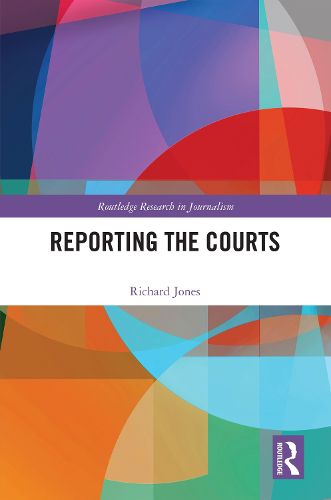Readings Newsletter
Become a Readings Member to make your shopping experience even easier.
Sign in or sign up for free!
You’re not far away from qualifying for FREE standard shipping within Australia
You’ve qualified for FREE standard shipping within Australia
The cart is loading…






This book makes a critical intervention into debates about journalism and the crisis in local news. Interrogating the history and current practice of court coverage in the UK, the author argues for its importance as a central feature of both open justice and public interest reporting.
The book challenges narratives of a decline in the perceived quality of local media. Yet it also highlights a reliance on major local press companies facing acute financial challenges, meaning court reporting faces a potentially precarious future. The book critically examines coverage of the courts in the context of financial crises, which have diminished both newspapers and the criminal justice system. How the norms of court journalism emerged and evolved are put under scrutiny, and the book then considers how court reporting is practiced today, including the use of cameras and social media as well as remote hearings during and since the pandemic. The author takes us inside a major murder trial and explores why court reporting remains worth preserving and enhancing.
Offering recommendations which could help to maintain and extend coverage of the courts, this volume will interest students and scholars of journalism, mass communication, media studies, media law and communication studies.
$9.00 standard shipping within Australia
FREE standard shipping within Australia for orders over $100.00
Express & International shipping calculated at checkout
This book makes a critical intervention into debates about journalism and the crisis in local news. Interrogating the history and current practice of court coverage in the UK, the author argues for its importance as a central feature of both open justice and public interest reporting.
The book challenges narratives of a decline in the perceived quality of local media. Yet it also highlights a reliance on major local press companies facing acute financial challenges, meaning court reporting faces a potentially precarious future. The book critically examines coverage of the courts in the context of financial crises, which have diminished both newspapers and the criminal justice system. How the norms of court journalism emerged and evolved are put under scrutiny, and the book then considers how court reporting is practiced today, including the use of cameras and social media as well as remote hearings during and since the pandemic. The author takes us inside a major murder trial and explores why court reporting remains worth preserving and enhancing.
Offering recommendations which could help to maintain and extend coverage of the courts, this volume will interest students and scholars of journalism, mass communication, media studies, media law and communication studies.